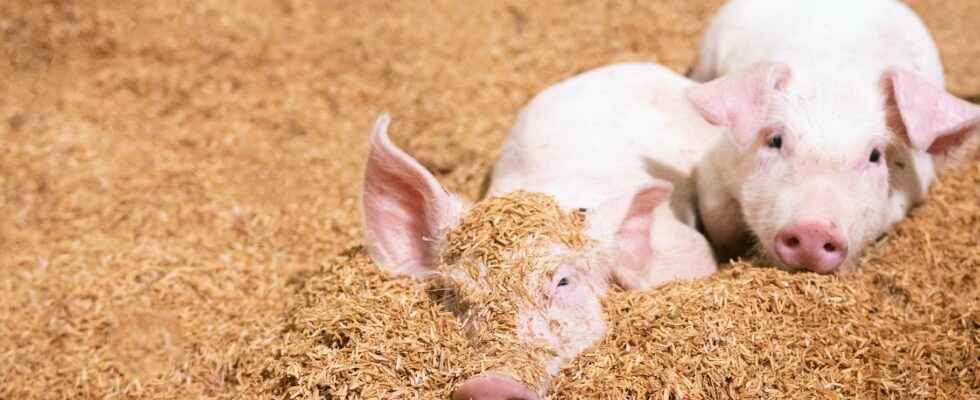You will also be interested
[EN VIDÉO] Animal intelligence: the elephant would be aware of its body An Asian elephant has brilliantly passed an intelligence test that a two-year-old child fails: you can’t pull a carpet if you’re on it. Carried out by the association Think Elephants International, the experiment shows that the elephant is aware of its own body, as also shown by the mirror test. A rare ability in the animal world.
The pig is the smartest farm animal. Here, the idea is dropped. On certain points, he is able to compete with the dog, the dolphin or even the chimpanzee. He is able to recognize symbols. And he has memory. A good memory. Everything you need to learn to play video games.
The pig, as we have already mentioned, also successfully passes the famous test of mirror. Or at least, a variant specially designed for him by the researchers. A proof that the pig has self-awareness. This gives hope that he may also be aware of others. Scientists have already been able to show that the pig knows how to deceive its enemy. Understand, a pig he doesn’t know. Demonstrating what one might call a certain form of intelligence ” Machiavellian » to hide his food. The pig, on the other hand, behaves quite differently in the presence of a congener that it knows. in which he trusts.
Thus, the pig has a personality. He feels emotions. And he expresses them through vocalizations that the other pigs know how to decipher. The trouble is that we, simple humans that we are, we don’t speak… the pig. That’s a shame. Because understanding the emotions expressed by the pig could allow breeders to improve their well-being. Imagine yourself on a translation softwareselect language ” pig “ and immediately obtain the translation of the vocalizations into French. This is a bit of what researchers have managed to develop. A tool that deciphers the sounds emitted by pigs to help breeders better understand the emotions behind them.
Pig grunts reveal their emotions – University of Copenhagen
I haven’t ate pig in many years…and this just adds to my reasoning for not doing so 🙁 https://t.co/vCExkSBL6y
— itsokayokay (@okayayeokay) March 8, 2022
Translate the language of the pig
Among them, Cocorico! French researchers. They first recorded thousands of vocalizations of pigs at very different ages and in twenty very different situations, from their birth to the slaughterhouse through different types of breeding to obtain nearly 7,500 good quality recordings. , both positive and negative emotions.
It was then necessary to mobilize the expertise of ethologists and bioacousticians. The first for classify emotions that they have been studying for about thirty years now in animals according to the situations they experience. Their evaluation was supplemented, where possible, with data on the heart rate of pigs. The bioacousticians, for their part, were there to analyze, in a more technical way, the acoustic structure of the vocalizations, their frequency, their purity, etc.
What emerges from this work is that negative emotions preferentially call for high-frequency, scream-type vocalizations. Low-frequency vocalizations such as grunts, on the other hand, can reflect both positive and negative emotions. But, in the first case, for example, the vocalizations are shorter and show small amplitude fluctuations.
To capitalize on their results, the researchers called on theintelligence… artificial, this time. They have perfected a system which, in comparison with the first 7,500 classified sounds, is capable of translating, in more than 90% of cases, the valence emotional of the emotion expressed — whether it is a positive or negative emotion — by vocalization, but also to show, in more than 80% of cases, the situation at the origin of this emotion . Technology could help signal a problem to breeders. Or allow them to improve the well-being of their pigs by providing them with new games.
So, even if we need an intermediary to succeed in understanding it, we can now be convinced of it. The pig… isn’t so stupid!
Interested in what you just read?
